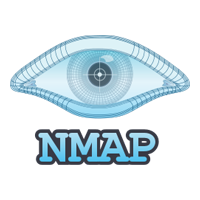Ethical hacking, also called white hat hacking or penetration testing, is a process where organizations employ hackers to intentionally hack their own systems and uncover vulnerabilities. Unlike their malicious counterparts, ethical hackers have the full consent of the organization they are working for.
Ethical hackers use the same techniques as malicious actors to test IT assets for vulnerabilities. They may deploy code injection attacks, distributed denial-of-service (DDoS), brute force, social engineering, or cross-site scripting attacks to hack a system. Organizations can then address the issues before they become a security incident.
How does ethical hacking work?
Whether ethical or not, the steps involved in hacking are the same. Some of the commonly employed hacking steps are:
1. Reconnaissance
During the reconnaissance stage of ethical hacking, the hacker gathers information about the system. Dumpster diving is also performed to check for sensitive information that might be inadvertently sent to the trash.
2. Scanning
In the scanning stage, the ethical hacker uses tools to test the organization’s weak points. Scanning involves identifying active hosts, mapping their networks, and sending packets to ports using ping scans, SYN scans, vanilla scans, and XMAS scans to identify fault lines.
3. Access phase
The hacker exploits the vulnerabilities discovered in the previous stages, which subsequently gives them entry into the system. The end objective is to escalate privileges, allowing them to gain administrative control and access all vital resources.
4. Maintaining access phase
Here, ethical hackers try to maintain access to the network so they can keep penetration testing (pentesting) it in the future. Ethical hackers may also install a mock Trojan horse virus or a backdoor to test the system. This phase helps hackers understand how much damage a malicious actor can cause if they gain administrative privileges.
5. Reporting
Reporting is the final step in the ethical hacking process — and the one that most differs from unethical hackers for obvious reasons. After the hackers have identified all the vulnerabilities, they create a comprehensive report outlining all the security loopholes found, along with any steps taken to address them and further recommendations.
Why organizations use ethical hacking
With the number of cyberattacks increasing every year, businesses need to defend their systems from attackers at all costs. One of the ways businesses can protect themselves from malicious actors is by using the services of an ethical hacker. Ethical hackers step into the shoes of threat actors and find fault lines in a system that others normally wouldn’t.
What differentiates them from unethical hackers is that when they find a vulnerability, they report it to the organization immediately without exploiting it for their personal gain. It is also their responsibility to provide advice on how to prevent problems from occurring, alongside ensuring top-notch security measures are in place to keep client data safe and secure.
Here are some key benefits of hiring an ethical hacker:
- The primary benefit of employing ethical hackers is that they enhance corporate network security by identifying vulnerabilities before they get exploited.
- Qualified ethical hackers ensure that your firm stays abreast of compliance regulations and avoids paying penalties.
- They can educate staff on security best practices, enabling them to be more vigilant when dealing with corporate data.
- They can find out how threat actors evade firewalls and other detection systems.
- They provide enterprises with a comprehensive view of their security systems.
What are the limitations of ethical hacking?
The main limitations of ethical hacking include inconsistency, time restrictions, and scope limitations — all of which can be partially or wholly mitigated by regular updates and reappraisals.
Inconsistent quality
The industry is flooded with numerous ethical hackers and companies, but not all offer the same quality of service. Going with a pentesting company that offers low-quality service can cause further damage to a business by failing to close all loopholes and providing a false sense of security.
Restricted to a point in time
A limitation of ethical hacking is that it delivers only a snapshot of your cybersecurity health at that point in time. However, organizations are constantly evolving and adapting to new security challenges. As a result, ethical hacking reports may quickly become outdated upon publication, and will need to be updated regularly — at least once a year, but ideally much more frequently — to stay relevant.
Scope limitations
The main objective of ethical hacking is to discover and analyze potential vulnerabilities that are not yet known and then implement measures to minimize or eliminate them. But unfortunately, ethical hacking is a field that is constrained by the scope of work (specifying the parts of a network that require testing), which limits the hackers’ ability to operate freely. Network managers need to ensure that ethical hackers are granted a comprehensive picture of the network so they can leave no stone unturned in their tests.
What is the difference between ethical hackers and malicious hackers?
While both ethical and malicious hackers may have similar skills, the crucial difference is that ethical hackers are authorized by the organization they work for to hack their systems, whereas malicious hackers operate without permission. Thus, ethical hackers will hack only when they have permission to do so and have all legal contracts in place.
In contrast, malicious hackers are individuals or organizations that gain access to a corporation’s data, exploit its vulnerabilities, and launch a series of attacks to disrupt systems. The ultimate aim is to steal data and sell it for a profit or demand ransom money in exchange for it.
Top 3 ethical hacking tools
There are many quality ethical hacking tools available — and many more poor ones. Here are a few strong contenders to consider.

SQLMap
SQLMap is a popular pentesting tool used by ethical hackers to try out SQL injection (SQLi) attacks and verify if a network is protected. The tool can detect six different SQLi types — Boolean-based blind, time-based blind, error-based, union-based, out-of-band, and stacked queries. In addition, SQLMap supports several database systems like Oracle, Sybase, PostgreSQL, Microsoft SQL Server, IBM DB2, Firebird, and several others. It’s also a free, open source solution available to anyone with the training to use it.

Nmap
Nmap is an open-source network scanner tool used to discover open ports and scan networks. With this multipurpose tool, hackers can perform various tasks, such as finding live hosts on a network, launching DNS queries, tracerouting, scanning ports, and ping sweeping. The types of scans you can perform with Nmap include TCP connect scans, bounce scans, SYN scans, TCP reverse identification scans, and UDP scans. It is also free and open source.

Metasploit
Metasploit is another open-source tool that scans networks for vulnerabilities. It has a vast library of exploits and payloads to help ethical hackers identify and mitigate actual attacks. Tools offered by Metasploit include MSFconsole (default Metasploit interface), MsfVenom (customize payloads), msfdb (database management), and Meterpreter (advanced payload).
How to become an ethical hacker
To become a successful ethical hacker, aspiring candidates should be well-versed in networking, programming, operating system configuration, and database familiarity.
Networking knowledge
For ethical hackers to successfully exploit a system’s weaknesses, they must have a comprehensive understanding of networking concepts. They should also know networking fundamentals like servers, internet protocols, network architecture, topology, subnetting, and DHCP to detect network intrusions easily.
Programming languages
To gain an in-depth understanding of a company’s software, ethical hackers can benefit from learning programming languages like C++, Java, Python, Perl, Ruby, and various others. This will help them exploit programming loopholes and build a more secure system.
Operating systems
Ethical hackers should know how to use various operating systems, including both Windows and Mac. With Linux being such a popular choice of operating system for enterprises, ethical hackers need to develop mastery of it especially. By learning this, they will be better equipped to combat hackers and reinforce the system’s defenses against vulnerabilities.
Database skills
Another skill that ethical hackers should know is database navigation. Databases are repositories of data. If they get hacked, then the entire business is at risk. Companies thus need to make them hack-proof. So ethical hackers should clearly understand databases and how they function in order to pentest and ultimately guard them against malicious actors.
Bottom line: Ethical hackers keep unethical ones out
The costs associated with cyber incidents have become so high that it is no longer feasible for businesses to overlook them. Taking a proactive approach to network security can help organizations secure their data. Although ethical hacking alone cannot provide complete protection to a company, it can significantly strengthen the defense systems of an enterprise when combined with other security best practices.
It’s important to not just have the expertise when performing ethical hacking, but the right tools as well. Here are the best ethical hacking tools for a variety of purposes to help your team test vulnerabilities in your network.
The post What is Ethical Hacking in Cybersecurity? Ultimate Guide appeared first on Enterprise Networking Planet.

